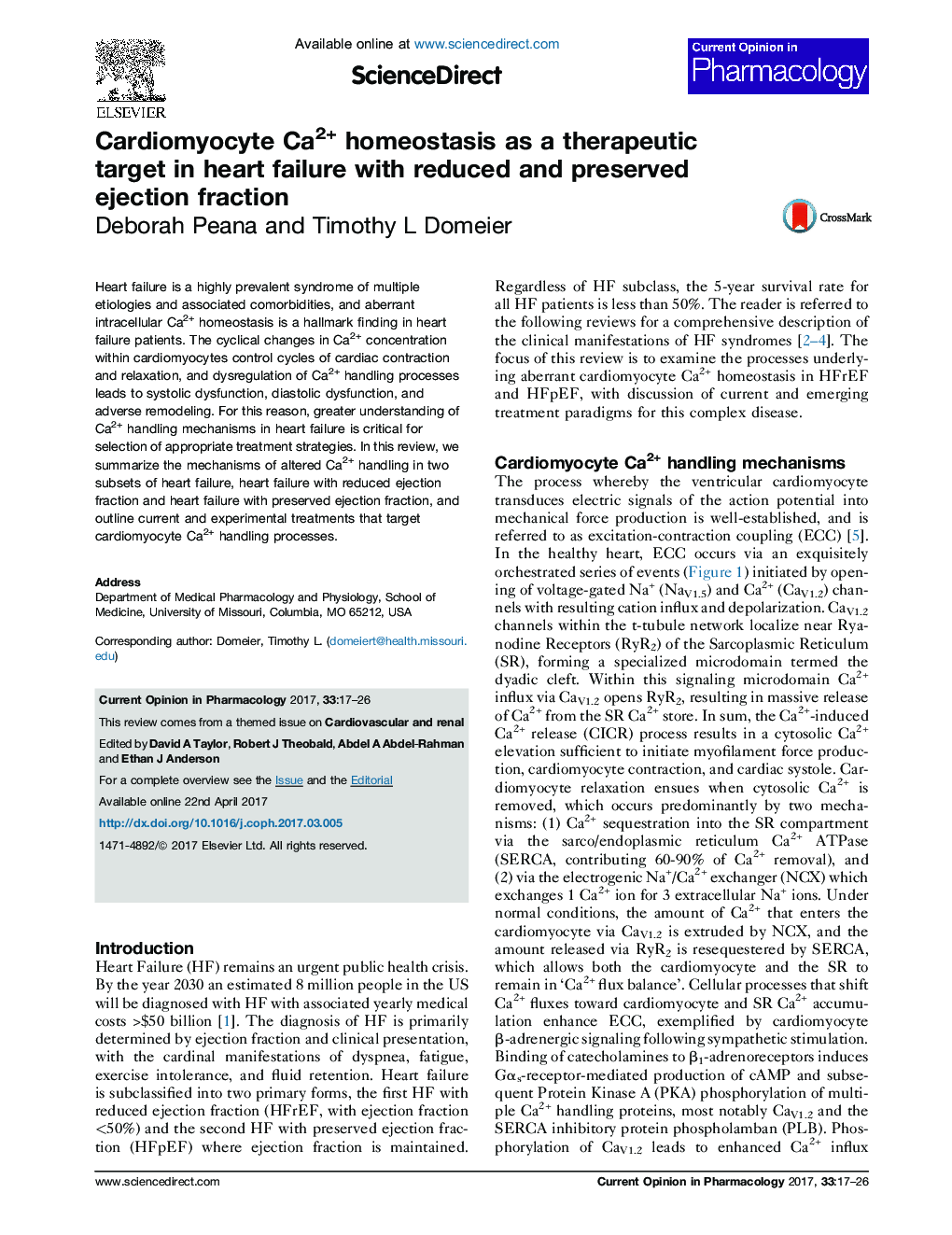| Article ID | Journal | Published Year | Pages | File Type |
|---|---|---|---|---|
| 5554294 | Current Opinion in Pharmacology | 2017 | 10 Pages |
â¢Heart failure is subclassified based on reduced or preserved ejection fraction.â¢Treatments targeting cardiomyocyte Ca2+ homeostasis are effective in HFrEF.â¢Half of all heart failure patients are diagnosed with HFpEF.â¢Phamacological treatment of HFpEF is largely ineffective.
Heart failure is a highly prevalent syndrome of multiple etiologies and associated comorbidities, and aberrant intracellular Ca2+ homeostasis is a hallmark finding in heart failure patients. The cyclical changes in Ca2+ concentration within cardiomyocytes control cycles of cardiac contraction and relaxation, and dysregulation of Ca2+ handling processes leads to systolic dysfunction, diastolic dysfunction, and adverse remodeling. For this reason, greater understanding of Ca2+ handling mechanisms in heart failure is critical for selection of appropriate treatment strategies. In this review, we summarize the mechanisms of altered Ca2+ handling in two subsets of heart failure, heart failure with reduced ejection fraction and heart failure with preserved ejection fraction, and outline current and experimental treatments that target cardiomyocyte Ca2+ handling processes.
